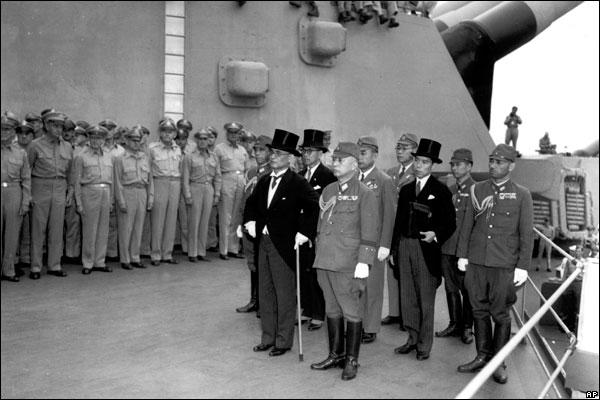
The Pacific War pitted the Allied powers against Japan in a vast arena in the Pacific Ocean and East Asia. Japan took control of Manchuria in 1931 and began a full-fledged war against China in 1937. In 1940, Japan joined Germany and Italy in the Axis alliance and planned to displace the United States, Great Britain, France, and the Netherlands as the dominant Pacific power. The ensuing attacks on the naval base at Pearl Harbor and on military facilities in the Philippines on December 7-8, 1941, led to war in the Pacific. Following the Battle of Midway in June 1942, the United States, Great Britain, Commonwealth, and other allied nations began the long counteroffensive to penetrate the perimeter of the Japanese empire and isolate the Japanese home islands. U.S. and Australian forces began an island hopping campaign in the central and southwest Pacific and by early 1945 were nearing the Japanese mainland, while British, Indian, and other Commonwealth forces were turning defeat into victory in Burma. The final stages of World War II in the Pacific brought heavy casualties on both sides during fighting in Burma and in invasions of Luzon, Iwo Jima, Okinawa, and in the Dutch East Indies. U.S. forces implemented a naval blockade and strategic aerial bombardment of Japan in an effort to force Japanese capitulation; however, formal surrender came only after U.S. aircraft dropped atomic bombs on Hiroshima and Nagasaki and the Soviet Union entered the war with an invasion of Japanese-held Manchuria in August 1945.
Join scholars and veterans for an intriguing analysis of World War II in the Pacific. The public conference begins on Thursday, September 24 at 5:00PM, with a reception and keynote address by Professor Emeritus of History Williamson (Wick) Murray. On Friday, September 25, several scholars will present sessions on diplomacy of the Pacific War, the end of the war in East and Southeast Asia, and the destruction of the Japanese Empire. The conference will conclude with a panel of three combat veterans moderated by former Columbus mayor Greg Lashutka.
All conference activities are free and open to the public and will be held on the Columbus campus of The Ohio State University. While all sessions are free and open to the public, we ask that you register so we can make appropriate accommodations for all attendees. If you wish to support the Department of History by adding to development or endowment funds, please visit the giving page where you will find a complete list of funds supporting specific department initiatives and programs, including military history and student research and study abroad.
